Trekking to Everest Base Camp (EBC) in Nepal is not just about physical fitness; it demands mental fortitude as well.
As the famous mountaineer, Sir Edmund Hillary once said, “This trek is about finding comfort in the uncomfortable”. So, to conquer the challenges that come with such a trek, mental training is paramount.
Everest tours offer stunning views, but they can be challenging mentally. Think of walking in the rain, having a headache, dealing with altitude sickness, getting sick, dealing with broken gear, and having basic facilities in the mountains.
Already stressed?
We’re here to share the successful mental strength strategies we used while trekking to Everest Base Camp.
Mental practice for the EBC trek is about having the right mindset and learning techniques to stay motivated. Just like a physical training plan, mental toughness can be learned, trained, and developed.
If you want to maximize your abilities on the trail, you should below the techniques and exercises below.
Table of Contents
- 10 Metal Strength Strategies to Prepare for an Everest Base Camp Trek
- Cultivating a Positive Mindset
- Visualization
- Setting realistic goals
- Developing resilience and perseverance
- Focus on the present moment.
- Prepare for altitude sickness.
- Practicing mindfulness
- Mental training alongside physical training
- Seek support from a guide or fellow trekkers on the Everest Base Camp trail
- Mental Techniques and Tips for Female Trekkers to Stay Motivated on the Everest Base Camp Trail
- Final Words
10 Metal Strength Strategies to Prepare for an Everest Base Camp Trek
While a physical training plan is vital, mental toughness can be the key that keeps you resilient in difficult times. A well-trained mind can motivate a body that wants to quit.
Likewise, a sound mind allows you to push through challenging situations and complete the trek successfully.
Here are some essential guidelines to prepare mentally for an Everest Base Camp trek or any other trek in the Himalayas:
Cultivating a Positive Mindset
Trekking to Everest Base Camp is both physically and mentally challenging. Thus, cultivating a positive mindset helps prepare for challenges ahead.
Affirmations are crucial to overcoming negative thoughts. A positive mindset is a protective factor for your physical well-being too.
While walking for hours at a high altitude all you can think is ” I just want this to get over and get a spa and rest for days.”
The mind is powerful. The more you think of these self-sabotaging thoughts, the less likely you can complete the trek. To overcome these thoughts, repeat positive affirmations in your head.
Here’s an example.
“I have dreamt of this. I have trained for weeks. I have spent money on this. Nothing can stop me!”
Embrace a positive outlook and maintain an optimistic attitude. Focus on the incredible experiences and breathtaking landscapes you will encounter rather than dwelling on potential difficulties.
To boost your confidence and maintain a strong mental attitude for EBC Trek, you have to cultivate a positive mindset. Here’s how you can do it:
- Practice some positive affirmations like “I can do it.“, “I will make it.“, “I am capable.“, etc.
- Transform negative self-talk into positive self-talk. During the trek, it is very easy to be affected by negative self-talk.
- Find humor in adversity. Even if something bad happens, remember that it is for some greater good.
- Try to turn failures into lessons. View setbacks as opportunities for growth and learning. This will reduce the likelihood of repeating mistakes.
- Seek companions who offer encouragement and motivation throughout the trek.
- Practice gratitude and appreciation along the way. It will enhance overall well-being and positivity.
Visualization
Visualization is a key technique that professional athletes have used for decades. It is the process of creating a mental image of what you want to happen in reality.
So, when you think about the EBC trek, close your eyes and visualize standing at base camp, surrounded by towering peaks. Imagine the feeling of accomplishment and pride as you complete each segment of the journey. Picture the iconic Everest Base Camp signpost and the feeling of reaching your ultimate destination.
In the same way, during difficult moments, like tough uphill climbs, especially during the Kala Patthar hike, visualize yourself conquering each step, knowing that the view from the top will be worth it.
If you visualize success, you can easily overcome obstacles. Here’s how you can do it:
- Visualize yourself trekking each step with confidence and determination.
- Imagine the invigorating sensation of fresh mountain air filling your lungs and energizing your body.
- Picture yourself interacting with fellow trekkers, sharing stories, and building camaraderie.
This is sure to increase your mental strength for trekking to Mount Everest.
Setting realistic goals
Especially if you are a beginner on the Everest Base Camp Trail, setting some realistic small goals can be very helpful. This allows you to concentrate on one small goal at a time.
While hiking, you must concentrate all your attention on reaching the day’s destination. Avoid dwelling on distant challenges or the entire trail, as it may be overwhelming.
By setting achievable goals, you can create a success loop that drives you forward during the journey. These small victories provide a mental boost, keep you motivated, and help you focus on your ultimate goal of reaching Everest Base Camp.
Here’s how you can do it:
- Divide the trek into manageable segments and set small goals for an easy day.
- Choose significant landmarks or destinations along the trail as your daily goals.
- Set yourself rewards when you meet your day’s goal. For instance, witnessing the unobstructed view of Mt. Everest from the Kala Patthar summit
- Embrace each step of the trek and take in the beauty of the landscapes around you. Find joy in the process, not just the result.
Developing resilience and perseverance
While doing the Everest Base Camp trek, you must accept the fact that it is one of the most challenging treks in Nepal. So difficulties are part of the journey. You must be mentally prepared to face and overcome them.
Develop a resilient mindset of grit and determination to persevere through tough situations. For instance, if you experience mild altitude sickness in Namche Bazaar and can’t continue, don’t be disheartened. Take one or two days to rest and admire the breathtaking mountain views from your teahouse.
Namche Bazaar is a beautiful place to enjoy. If you feel up to it, consider going for a small hike. Once you recover, resume your trek with a flexible attitude. Accept the fact that challenges are a natural part of the EBC journey.
So if you want to develop resilience and perseverance, here’s how you can do it:
- Offer a word of encouragement to yourself during challenging times. This will boost your morale and keep pushing you forward.
- Tap into your inner resilience to face the physical and mental demands of the EBC trek.
- Be adaptable and open to adjusting plans when needed. Resilience is about bouncing back and staying on track even in changing circumstances.
- No matter how small, acknowledge and celebrate your achievements along the way.
Focus on the present moment.
During the Mount Everest trekking tour, maintaining focus and attention is essential to overcome mental toughness. Especially while navigating challenging terrain like Gorak Shep, a short hike to EBC, or Kala Patthar, you might get both physically and mentally exhausted.
Thus, you need to avoid dwelling on intimidating thoughts, altitude sickness worries, or time concerns. Simply concentrate on the route and avoid unnecessary distractions.
Staying present and focused will enhance your trekking experience and safety. Here’s how you can do it:
- Concentrate on the immediate task at hand, whether it’s the trail ahead or your next step. Avoid getting overwhelmed by future possibilities.
- Be thankful for what you have at the moment. Embrace the beauty of the mountains and landscapes around you.
- Notice and immerse yourself in your surroundings. Appreciate the natural wonders along the trail.
Prepare for altitude sickness.
The Everest Base Camp trek is one of the most famous high-altitude treks in Nepal. So, mental preparation for the EBC trek includes educating yourself about acute mountain sickness (AMS) and its symptoms. Understand how high altitude can affect your body and how to recognize AMS.
Altitude sickness occurs when your body struggles to adjust to the thin air at high altitudes. It can lead to symptoms such as headaches, shortness of breath, nausea, and fatigue.
In general, you can avoid altitude problems by drinking plenty of water to stay well hydrated. You need to walk at a steady pace to conserve energy and reduce the risk of altitude sickness. And most importantly, ascend slowly to allow your body to adapt to the reduced oxygen level.
Indeed, a positive attitude and mental preparedness are vital. Stay calm and focused, and be aware of signs of altitude sickness. This mindset will help you seek medical assistance if needed.
Here’s how you can do it:
- Get travel insurance that covers trekking at high altitudes above 4,000 meters, including helicopter evacuation.
- Pack necessary medication for common trek-related issues like dry cough, diarrhea, and headaches.
Practicing mindfulness
Another best way to mentally prepare for the Everest Base Camp trek is to practice mindfulness. These practices keep you calm and reduce your stress.
Trekking at high altitudes and facing unfamiliar challenges may trigger anxiety. So meditation or breathing exercises can teach you how to acknowledge and manage anxious thoughts and emotions. This will allow you to approach the trek with a more composed and confident mindset.
During the tour, you will need to stay focused on the trail. Regular mindfulness exercises can train your mind to improve concentration.
Trekking can be emotionally intense, and you may experience a range of emotions. Mindfulness can help you develop emotional awareness and regulation. This practice will help you cope effectively with the ups and downs of the journey.
Here’s how you can do it:
- Set aside a few minutes each day to meditate. Find a quiet, comfortable space, close your eyes, and focus on your breath or a specific point of attention.
- Practice breathing exercises, such as belly breathing or nostril breathing. Deep, mindful breathing can instantly calm your nervous system.
- Perform a body scan to become aware of physical sensations and tension in your body. If you notice tension, consciously relax that area.
- Take some time to go on mindful nature walks. Pay close attention to the sights, sounds, and smells around you.
Mental training alongside physical training
To prepare yourself mentally for the Everest Base Camp trek, it is important to train your body as well. Building endurance, strength, and stamina through regular physical training is vital for tackling the trek’s demands. When you are in good shape and physically strong, you gain a significant advantage for the journey ahead.
A 2017 study by Slimani and colleagues showed that mental training with physical training improves strength training results.
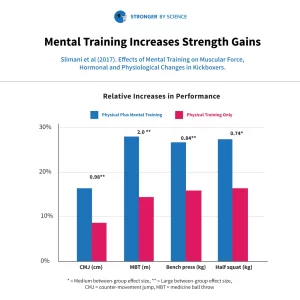
Graph comparison by Strongerbyscience
Moreover, knowing that you have diligently prepared your body can greatly boost your confidence. Confidence is essential for facing the challenges that may arise during the trek, such as altitude, unpredictable weather, and various obstacles along the route.
Here’s how you can do it:
- Engage in regular cardiovascular exercise (hiking, running, cycling, and swimming) to build endurance and stamina.
- Incorporate strength training exercises (squats, lunges, deadlifts, and push-ups) to build overall body strength.
- Include flexibility exercises (stretching and yoga) to prevent muscle strain and injuries.
- Consider altitude training or hiking at higher altitudes to acclimate your body to lower oxygen levels.
- Gradually increase backpack weight during walks or hikes to simulate the load during the trek.
Seek support from a guide or fellow trekkers on the Everest Base Camp trail
Another effective way to prepare yourself mentally for the Everest Base Camp trek is by seeking support from your guide and fellow trekkers. You will find encouragement during challenging moments and create lasting memories with like-minded adventurers.
Guides have in-depth knowledge of the region, its culture, and its customs. They can provide valuable insights, the best time to visit, and enhance your understanding of the area.
Listen carefully to your guide’s advice and follow their instructions during difficult situations. They will safely guide you through any adversity.
Here’s how you can do it:
- Your guide and fellow trekkers can be a great source of motivation and encouragement. Their support will keep you going when you need it the most.
- Joining a group trek provides a sense of companionship. It offers you peace of mind knowing you are not alone on the trail.
- Hiring an experienced guide ensures you have someone to rely on and alleviates any anxiety about the trek.
Mental Techniques and Tips for Female Trekkers to Stay Motivated on the Everest Base Camp Trail
As a female trekker, you must be aware of the specific challenges you might encounter on the trail. By being well-informed and building a strong mindset, you can navigate these challenges with confidence and avoid potential mental breakdowns during the actual trek.
So, here are some extra Everest Base Camp tips to help you crack the EBC trek:
Don’t anticipate advanced toilet facilities
Toilet facilities along the Everest Base Camp trail can be very basic, and in some sections, there may be no proper toilets available. This can pose a challenge, particularly for female trekkers. So, to ensure a more comfortable trekking experience, you can bring pee bottles or make yourself comfortable using squat toilets.
Likewise, always carry your toiletry essentials in your daypack. These may include toilet paper, wet wipes, and hand sanitizer. Toilet paper may not be readily available in all restrooms, so having a supply ensures you are prepared for any situation.
Hygiene and showers
The lack of showers along the EBC trail is another challenge for female trekkers. The cold and rugged conditions of the trek can make it difficult to have regular access to bathing facilities.
In such situations, wet wipes can become your best friend for maintaining personal hygiene. Wet wipes are lightweight. While wet wipes are convenient, it’s essential to be mindful of their environmental impact. Choose biodegradable wipes and carry a small, sealable bag to store used wipes.
Menstrual Cycles
Managing monthly cycles is an important consideration for female trekkers on the Everest trek.
Before starting the trek, ensure you have an adequate supply of menstrual products (tampons, pads, and menstrual cups) to last the entire trek. It’s not easy to find these products along the trail.
Furthermore, maintain good hygiene during your monthly cycle. Be sure to change menstrual products regularly and wash your hands. Carry a few sealable plastic bags to dispose of used sanitary items properly.
Also, if possible, consider using biodegradable menstrual products to minimize your environmental impact.
Dealing with Premenstrual Syndrome (PMS)
American College of Obstetricians and Gynecologists states that many women feel physical or mood swings before mensuration. If this happens month after month affecting women’s normal life, then it’s called premenstrual syndrome (PMS).
Dealing with PMS during a trek can be challenging for women. Mental struggle with PMS is real and can impact one’s overall experience on the Everest Base Camp trek.
If you have PMS, be kind to yourself and acknowledge that PMS is a natural part of the menstrual cycle. It’s okay to feel low during this time. Practice self-compassion and engage in mindfulness practices.
You can even share your feelings with supportive trekking partners. If you feel overwhelmed, take some quiet moments for yourself. Lastly, accept that emotions may fluctuate during PMS, and it’s okay to have both good and bad days during the trekking tour.
Choose proper footwear
Proper footwear is crucial for female trekkers undertaking the Everest trek. Many women have low-volume feet, which are narrow and skinny.
Thus, it’s essential to choose good hiking boots that cater to these specific foot requirements to ensure a comfortable and blister-free experience. Also, breaking in boots before the trek is important to allow your feet to adjust to them.
Not only the boots, make sure you maintain a proper packing list before starting the trip.
Dont keep long toenails
Don’t overlook the importance of proper toenail care. Long nails can be prone to breaking due to the constant impact against the front of your shoes while hiking. Henceforth, trim your nails before the trek to avoid discomfort and potential nail injuries.
Final Words
The journey to the base camp of the world’s highest peak, Mt. Everest, is not just about conquering the physical hurdles but also conquering your mind.
And, mental training for the Everest Base Camp trek is a continuous process. If you stay focused and train your mind alongside your body, you will unlock the full potential of your hiking experience.
Learn, practice, and apply them on the trail. See how much you can conquer!
Thus, create and follow these mental checklists for the EBC trek. All these tips and techniques can make a huge difference on the trail. If you dislike trekking and want an easy way to see Everest then go for a one-day Mount Everest Helicopter Tour.

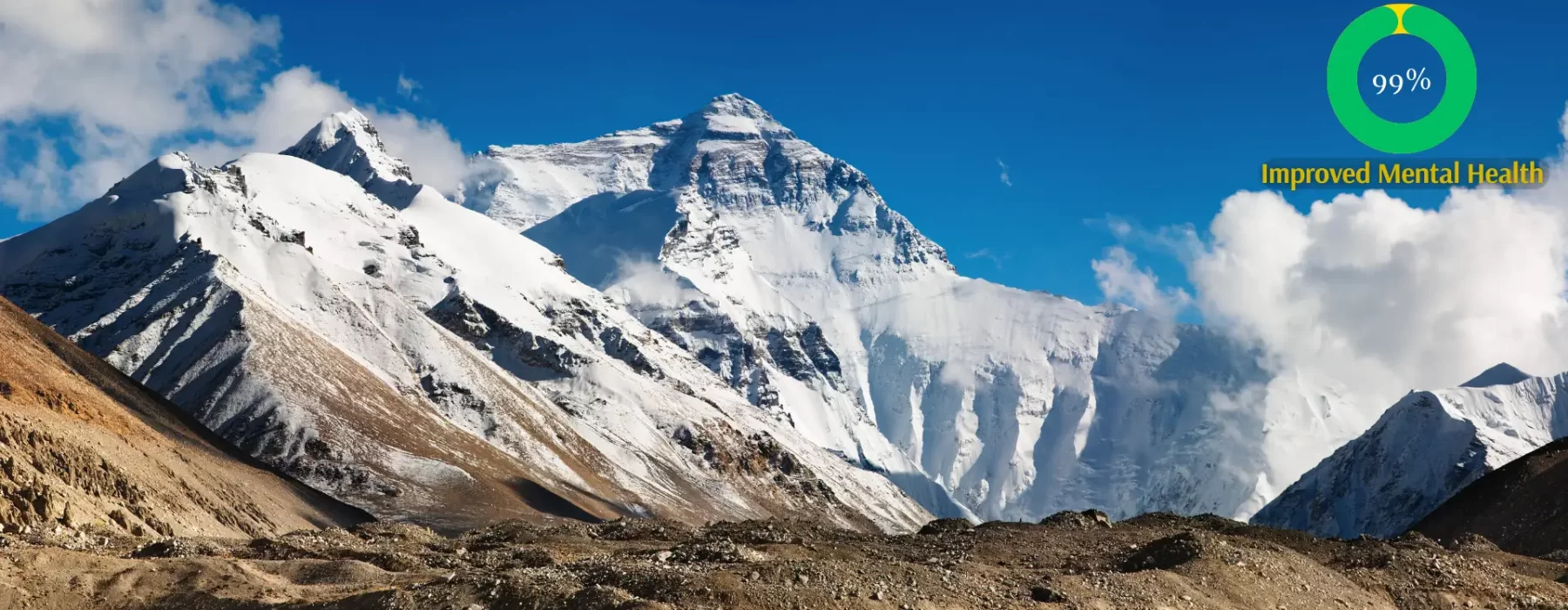



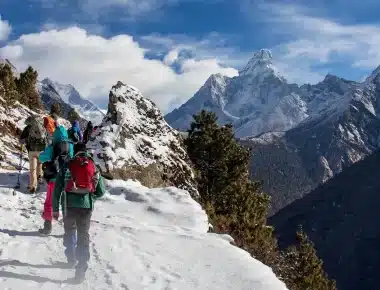
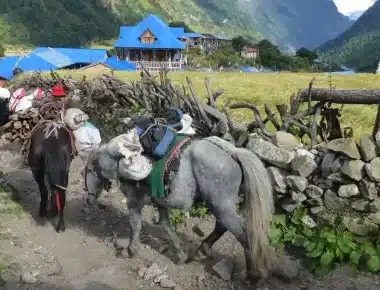
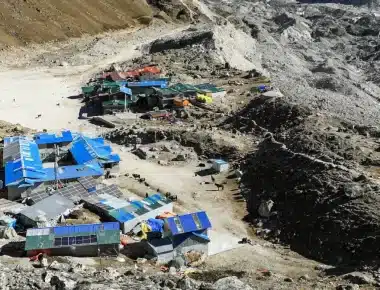
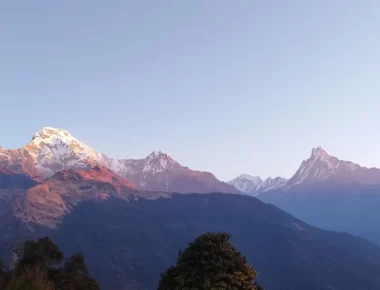

0 Comments